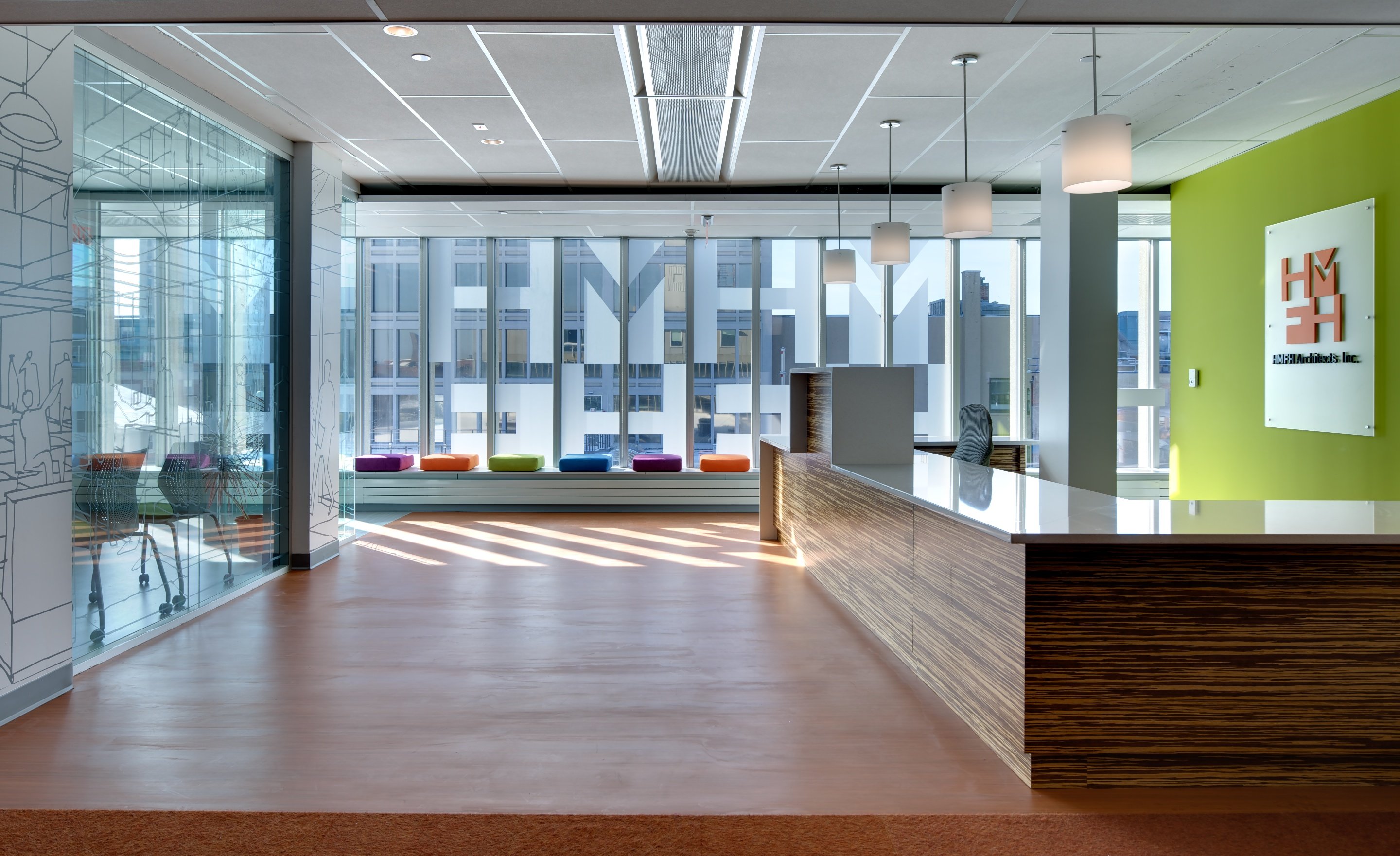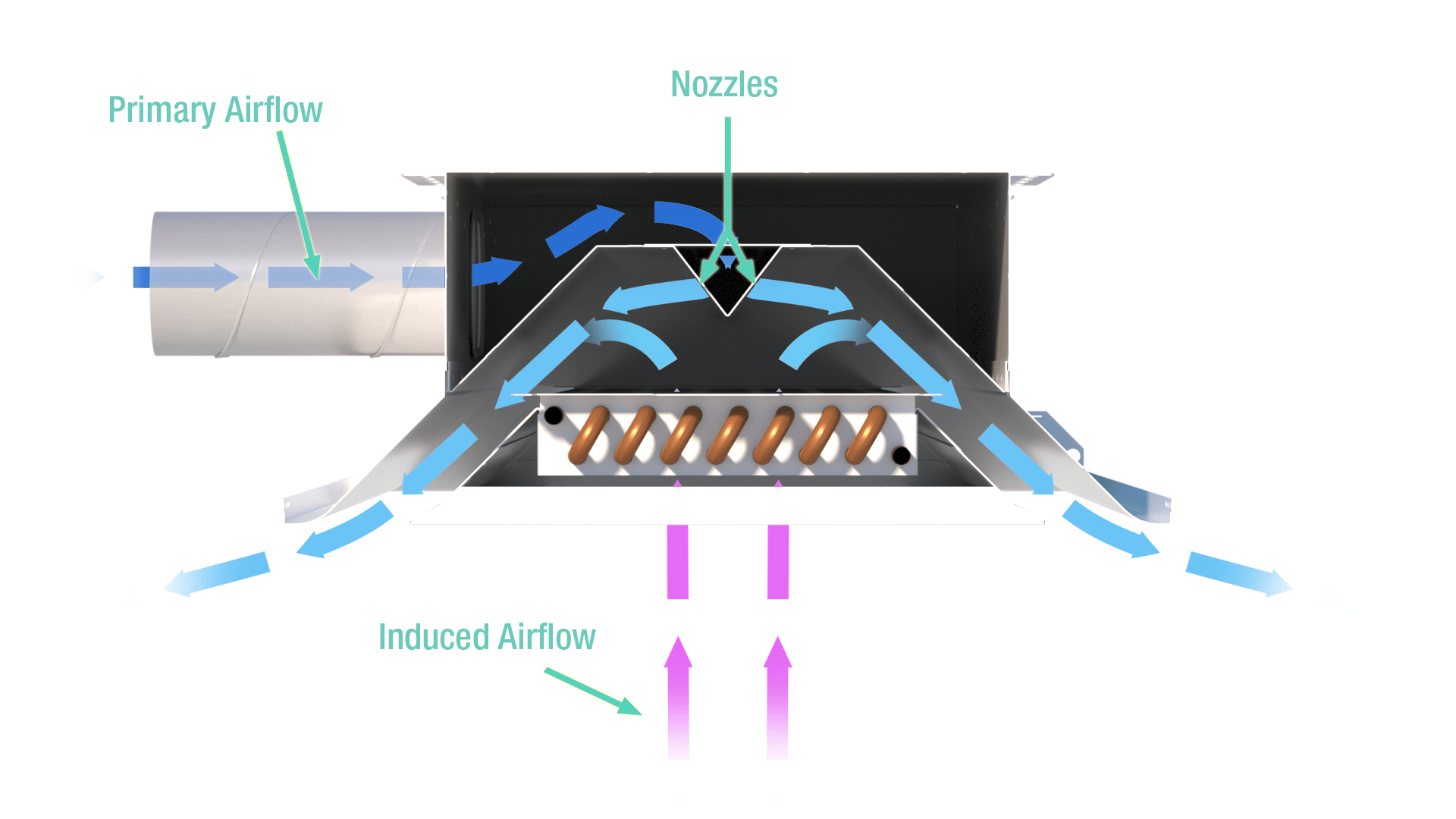Working with Active and Passive Beams in Cold Climates
For applications in climates that require a significant amount of heating, owners, engineers and contractors often wonder if chilled beams are an appropriate choice for their projects. Since the “chilled” part of the chilled beam name only specifies cooling, can you also produce heat with a chilled beam?
 |
| Active chilled beams installed in an office in Cambridge, MA |
To answer this question accurately, we first need to understand which type of chilled beam we are looking into.
There are two major types of chilled beams (with each containing several subcategories): active and passive chilled beams. Active chilled beams require airflow from an air handler or central fan system that can supply conditioned and, if needed, dehumidified air. This activates the induction process, which induces room air across the water coil.
 |
| Airflow of an active chilled beam |
Passive chilled beams, on the other hand, do not require any airflow and do not have a duct connection, so ventilation airflow needs to be supplied by another system. This type of chilled beam requires some free area around the beam for air to rise as it is heated by heat sources in the room and gains buoyancy. The water coil cools this air down and allows it to fall vertically as it decreases in both temperature and buoyancy.
 |
| Airflow of a passive chilled beam |
So back to the original question – can you heat with a chilled beam? The answer is that it depends. If you are using an active chilled beam, heating is no problem. The airflow forced through the nozzles mixes the air within the room and induces room air across the water coil for a fully mixed room condition. Successful projects have been installed as far north as Alaska and much of Canada.
However, this doesn’t hold true for passive chilled beams. If hot water were to be run through the water coil of a passive chilled beam, the air would gain buoyancy and would rise upward with no forced airflow to direct it into the room below. Passive chilled beams will cause the air to stratify, with all the heat provided rising upward away from the space where it is needed.
If heating is required with a chilled beam system, active chilled beams must be used. Active and passive beams can be used in combination if oriented correctly, so passive chilled beams can be installed in projects in northern climates alongside active chilled beams or another heating system to effectively condition the building.
For more information about active or passive chilled beams and how to choose what’s best for your project, visit our website or email us at sustainable@priceindustries.com.



